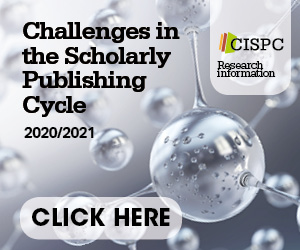OA interviews: Victoria Gardner, Taylor & Francis / Routledge Journals
With the raft of policies and mandates that impact researchers and their institutions Sian Harris asks a range of publishers and publishing services companies about their approaches to open access
Victoria Gardner, OA publisher, Taylor & Francis / Routledge Journals
One of our objectives around embracing OA is that our approach is very much a positive one. OA is here to stay. We have moved from being passive to being much more engaged.
At the end of 2011 we launched our first of our Taylor & Francis Open journals. The first were subscription journals that were converted. Now we have about 25, excluding Cogent, which is our new OA imprint. Cogent, which has five or six journals so far, is very keen on broad-based, megajournals, while the Taylor & Francis Open journals are more specific.
The biggest challenge with OA is the complexity. We are seeing more funder mandates. A lot are focused on green but in the UK we see the Wellcome Trust, RCUK and others focused on specific licences. The challenge is to comply, especially if researchers receive funding from more than one source. That complexity is not going to go away.
At the moment about one per cent of the articles we publish are gold OA. We are hoping that that will increase.
We have an experiment on about 39 library and information science journals where there is no embargo period for archiving. Despite that very liberal condition, very few are uploaded. By the time your article is published you’ve moved on to your next project and it’s not part of the mindset.
If we do a feed of accepted manuscripts to repositories we can ensure that they contain links to publisher’s site and the version of record. The disadvantage is if a publisher does it is going to be much more systematic, which brings us to the whole green Catch 22.
Our default is subscriptions with green OA. Initially we had a different approach that was all about gold but we had a lot of negative comments from authors. They complained: ‘The first thing I get on acceptance of my paper is you asking for money.’
Like a lot of stakeholders we are waiting to see how things develop. It still feels like early days. OA is here to stay but there is still a place for subscriptions. That’s the message we hear. Some of our journals have subscription prices of £300; that vastly undercuts our APC.
Our view is that green is symbiotic with subscription publishing. I can’t see how it can stand on its own. We’re keen to give authors rights but we need to be pragmatic. We allow them to self archive without embargo to their own website but we apply embargoes on institutional repositories.
We’re moved on in the debate quite significantly with CC licensing. At the beginning of 2013 there was concern about CC BY. Many HSS journals get a lot of revenue from third parties and that subsidises the journals. There were also concerns about copyright material in articles. There’s an interesting point around intellectual property. In biosciences you can patent; in the softer sciences the article is your IP.
We’ve come to appreciate that there is an inherent loss of control with CC BY. There is also a lot of good stuff in CC licences and a lot we can learn from them for our subscription licences.






